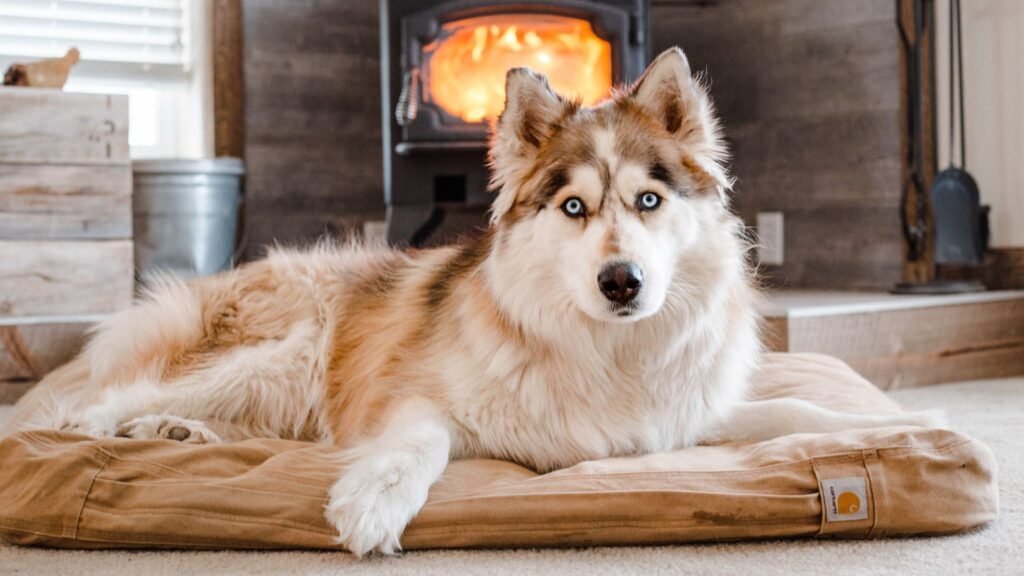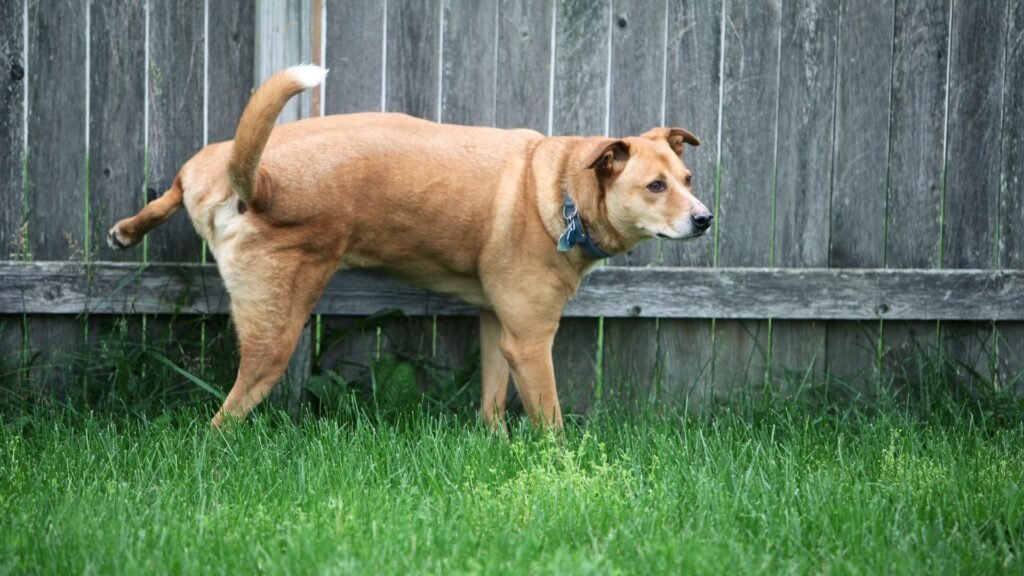One of the many responsibilities of being a dog owner involves understanding your dog’s most basic needs, including their bathroom habits. If you’ve ever found yourself wondering how long your dog can go without peeing, you’re not alone. It’s a common question, and the answers can vary depending on several factors like your dog’s age, size, and health.
- How Long Can Dogs Hold Their Pee (General Overview)
- Why You Shouldn’t Make Dogs Hold Their Pee Too Long
- Factors That Affect a Dog’s Bladder Control
- Age & Development Stage
- Hydration and Diet
- Breed and Size of the Dog
- Activity Level and Routine
- Medical Conditions
- What Are the Signs Your Dog Needs to Pee?
- Tips to Help Dogs Maintain Healthy Bathroom Habits
- Conclusion
Aside from sparing you the worry of potential indoor accidents, knowing this information can help you create a schedule that ensures your dog stays happy and healthy. After all, holding it in for too long doesn’t just lead to discomfort; it can also result in serious health issues for your furry friend. To help you better understand this important topic, we’re breaking things down into simple, relatable facts that every dog owner should know.
How Long Can Dogs Hold Their Pee (General Overview)
Dogs aren’t robots and can’t go long without eating and peeing. Their ability to hold urine varies based on age, size, and health. While adult dogs might manage 8-10 hours in a pinch, that doesn’t mean it’s safe or comfortable. Consistently stretching their limits can lead to physical and behavioral problems. Let’s dive into what’s normal what’s risky and how to spot when your dog truly needs relief.
Average Timelines by Age Group
Puppies under six months have tiny bladders and minimal control. They typically need to pee every 2-3 hours even overnight. Adolescent dogs (6-12 months) can wait 4-6 hours during the day but still struggle overnight. Adult dogs (1-7 years) often handle 6-8 hours if necessary, while seniors (7+ years) may need breaks every 4-6 hours due to weakened muscles or health issues. These timelines are averages. Your dog’s needs might differ based on factors we’ll explore later.
Maximum Limit vs Recommended Time
A healthy adult dog might survive a 10-hour workday without peeing, but that doesn’t make it ideal. The maximum limit is a biological threshold not a target. Consistently waiting until the “max” strains their bladder and kidneys. Vets recommend letting adult dogs relieve themselves every 6-7 hours at most. For puppies and seniors, that window shrinks to 2-4 hours. Pushing beyond these guidelines invites health risks we’ll cover next.
Why You Shouldn’t Make Dogs Hold Their Pee Too Long

It might seem harmless to delay a bathroom break for your dog every now and then, especially on busy days. However, consistently making your dog hold their pee for extended periods can lead to more than just discomfort. Their bodies, while resilient, aren’t designed to endure long stretches without relief. Ignoring their needs could have both immediate and long-term consequences for their health and wellbeing.
Risk of Urinary Tract Infections (UTIs)
One of the most common health risks of forcing a dog to hold their urine too long is a urinary tract infection (UTI). When urine stays in the bladder for prolonged periods, it creates a perfect breeding ground for bacteria to grow. Over time, this bacteria can lead to painful infections that make urination uncomfortable or even impossible for your dog without medical treatment.
Symptoms of a UTI can include frequent but small urination, accidents in the house, or noticeable straining when trying to pee. By ensuring your dog has plenty of opportunities to relieve themselves, you can prevent the discomfort and potential medical intervention that comes with UTIs.
Bladder Stones & Kidney Strain
Then there’s the chance of bladder stones. When urine sits in the bladder for extended periods, its chemical composition can change, allowing mineral deposits to form and crystalize. These stones can cause blockages, irritation, or infections, sometimes requiring surgery to remove.
Besides, consistent delays in bathroom breaks can put unnecessary strain on the kidneys. The kidneys rely on a steady flow of urine to filter toxins and waste from the body. Prolonged holding disrupts this process, potentially leading to severe kidney issues over time.
Discomfort & Stress
Perhaps the most obvious and immediate consequence of making your dog hold their pee is the sheer physical discomfort it causes. Anyone who has had to hold it for long periods knows that it’s not a pleasant experience. For dogs, this stress is compounded by their limited ability to communicate their needs or understand why they can’t find relief.
Over time, the ongoing stress of uncomfortable bladder pressure can influence your dog’s overall happiness and energy levels. You might notice unexpected changes in their behavior, such as appearing lethargic, less playful, or even more irritable than usual. These mood changes often originate from an unaddressed physical need.
Factors That Affect a Dog’s Bladder Control
Dogs are as unique as their owners, and their ability to hold their bladder depends on a variety of factors. Understanding these elements helps you cater to your dog’s specific needs, keeping them comfortable and healthy.
Age & Development Stage
Age is a massive piece of the puzzle. How long can puppies hold their pee? Not long—those little bladders fill up fast, and they don’t have much control yet. As they grow into adolescents and adults, their capacity gets better. But when they hit senior years, things can shift again. Older dogs might struggle with weaker muscles or health issues that make holding it tougher. It’s all about where they are in life.
Hydration and Diet
What goes into your dog determines what comes out, and how often. A dog’s hydration level directly impacts how quickly their bladder fills. If your dog drinks more water than usual, trips outside or to their designated potty area will naturally increase.
Diet also changes the game. Foods with high moisture content, such as wet dog food, contribute to increased urine production. On the flip side, a diet too low in fluids can lead to dehydration, reducing their trips outside but possibly increasing the risk of urinary issues over time.
Breed and Size of the Dog
Size often correlates directly with how long a dog can hold its pee. Smaller dogs tend to have smaller bladders, which fill up faster. This means tiny breeds like Chihuahuas or Dachshunds generally need more frequent breaks compared to larger breeds like German Shepherds or Great Danes.
Activity Level and Routine
How active your dog is changes things too. A high-energy pup who’s always on the move might need to pee more often than a couch potato. Routine helps a lot here. Dogs love consistency—if they know when their next break is, they’ll adjust to it. Shake up their exercise or schedule, and you might need to adapt their dog bathroom schedule too.
Medical Conditions
Last but not least, health issues can throw a wrench in things. Stuff like diabetes or kidney problems might mean more frequent pee breaks. If your dog suddenly can’t hold it like they used to, don’t brush it off, check with your vet. Medical conditions need attention, and catching them early keeps your dog in good shape.
What Are the Signs Your Dog Needs to Pee?

When a dog needs to pee, it rarely holds back on sending signals. You can spot these signs early and save your floors from accident clean-ups. Watch for physical hints and shifts in behavior that tell you a bathroom break can’t wait.
- First, many dogs begin to pace. They trot back and forth along the same path or circle a spot on the floor. This restless motion shows pressure in their bladder. You might see a dog sniff the ground excessively near doors or rugs. Sniffing serves as a method to locate their usual bathroom spot or a soft surface.
- Next, vocal cues can surface. A whine or high-pitched bark often means “Let me out.” If your dog stands by the door and emits low whimpers, it’s a strong plea. Some dogs scratch at the door or paw at tile and wood, hoping you notice. These actions reveal urgency.
- Body posture offers another tip. A dog that shifts weight from one paw to another, or that hunches its back, shows discomfort. Tail position can change too. Instead of wagging, the tail may lower or tuck slightly. Eyes might stay fixed on you or on the exit.
- In multi-dog households, pay attention when one dog stops playing mid-game. Abrupt pauses in activity—such as freezing during a tug-of-war—often signal a looming need. Even working breeds can halt in their tracks to signal relief time.
- Finally, keep an eye on settled dogs. If usually calm pets suddenly get up from sleep and head toward the door, they plan a quick exit. Senior dogs may move more slowly but still use the same signals.
By catching these signs—pacing, sniffing, vocal cues, body posture shifts, and activity pauses—you help your dog relieve itself on time. You preserve your home and maintain your dog’s comfort. A timely response builds trust and reinforces good habits.
Tips to Help Dogs Maintain Healthy Bathroom Habits
Now that you know how often your dog should go and what signs to look for, let’s talk about how to make their bathroom routine as smooth as possible. Here are some simple tips to keep their habits healthy:
- Stick to a regular schedule: Dogs thrive on routine. Try to take them out at the same times every day.
- Use positive reinforcement: Praise them or give a small treat when they go outside. It encourages good behavior.
- Monitor water intake: Keep an eye on how much they drink, especially before bedtime. This can help with nighttime pee schedules for dogs.
- Provide plenty of exercise: A tired dog is less likely to have accidents. Plus, exercise helps regulate their system.
- Consider crate training for puppies: It can help them learn to hold it and avoid accidents when you’re not around.
These tips aren’t rocket science, but they make a big difference. A little effort upfront saves you a lot of hassle later on.
Conclusion
Taking care of your dog’s bathroom needs might not be the most glamorous part of pet ownership, but it’s one of the most important. By understanding dog bladder control by age, watching for the signs your dog needs to pee, and following a consistent schedule, you’re setting your pup up for a healthy, happy life. Forcing them to hold it too long can lead to serious issues like UTIs, bladder stones, or behavioral problems. But with a little attention and care, you can avoid all that.
If you ever feel unsure or notice changes in your dog’s habits, don’t hesitate to reach out to your vet. They’re there to help. At the end of the day, your dog relies on you to meet their needs, and regular bathroom breaks are a big part of that. Keep them comfortable, and you’ll both be better for it.